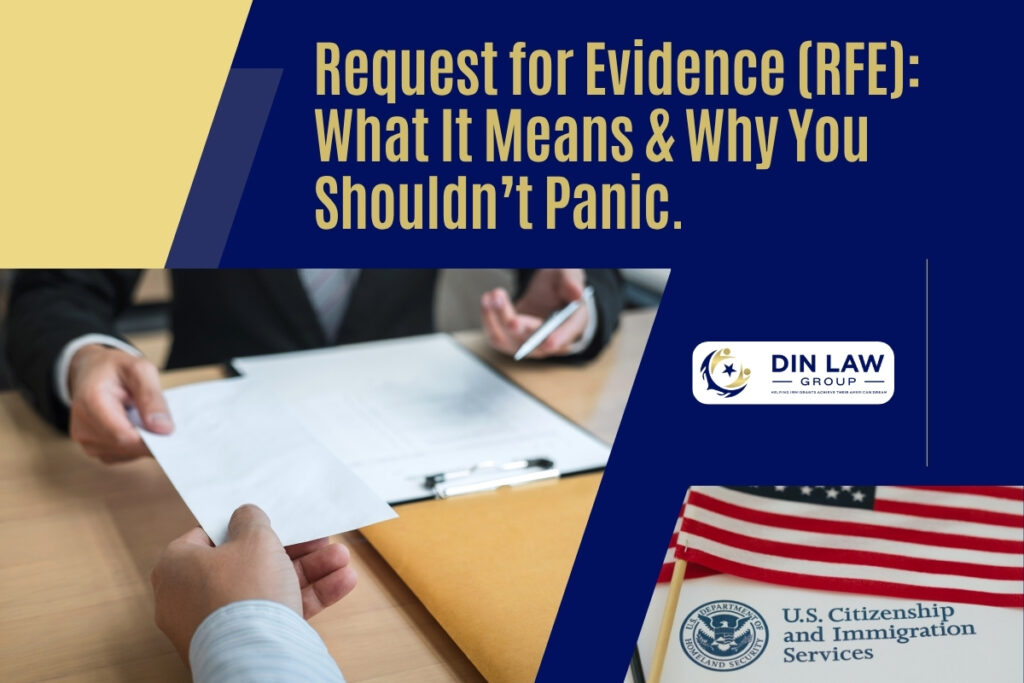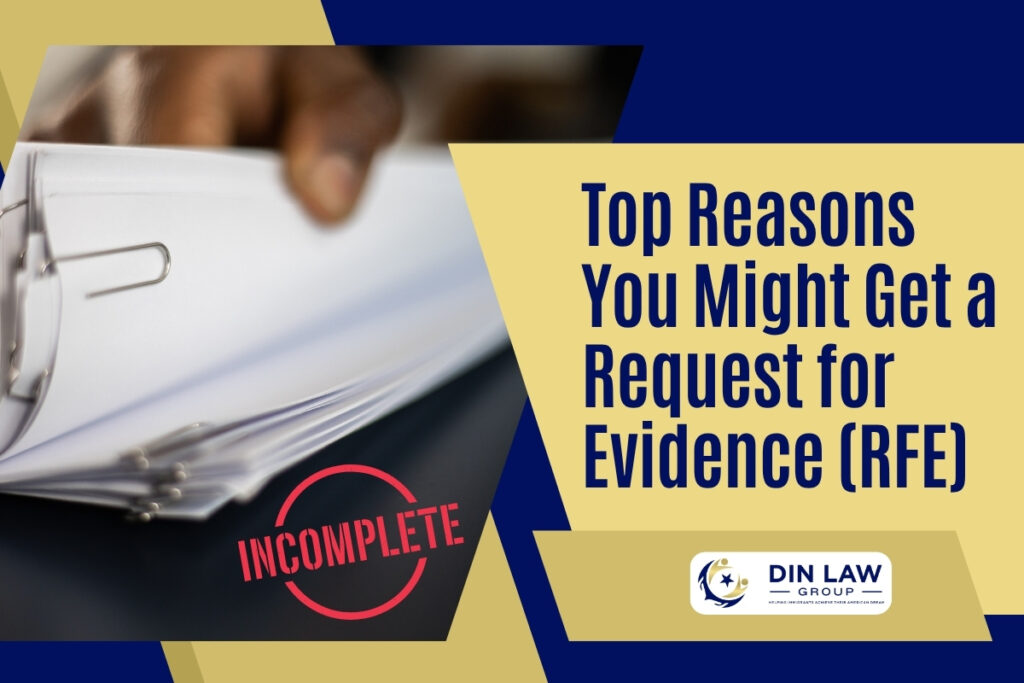Received a Request for Evidence (RFE) from USCIS? Let Din Law Group be the guide to an accurate response, on-time submission, and avoiding future delays.
If you’ve received a Request for Evidence (RFE) from U.S. Citizenship and Immigration Services (USCIS), you’re not alone, and you’re not out of options. Every year, thousands of immigration applications receive a request for initial evidence or a request for additional evidence, and the outcome often depends on how the response is handled. Receiving an RFE is a sign that your case is still being considered by USCIS.
Instead of a complete denial or a Notice of Intent to Deny, you are being “warned” of the issues that could cause your case to be denied. This gives you the chance to correct or strengthen your application. Without a doubt, receiving a request for evidence can be stressful, but the key is acting quickly, being thorough, and getting help when needed. At Din Law Group, we know exactly how to navigate RFEs.
Google Review – Abhishek C.

Don't risk your future by navigating immigration complexities and processes alone. Trust an immigration attorney for guidance.
A request for evidence is a notice issued by U.S. Citizenship and Immigration Services (USCIS) to an immigration applicant when more information is needed before making a decision. This doesn’t mean your case will be denied. It simply means USCIS needs clarification or proof before deciding.
RFEs are typically grouped into two categories:

This is issued when USCIS needs more information or clarification on your initial application. It is requested at the beginning of the review process. For example, if you applied for a marriage-based green card but forgot to include a copy of your marriage certificate, you may receive a request for initial evidence.
This request is issued when additional evidence is needed to support and verify your claims or better understand your situation. Even if you provided all initial documents, they might still issue a request for additional evidence to fill gaps or ask for further clarification.
The best way to handle any request for evidence is to work with an immigration lawyer.
You might get an RFE in a range of immigration matters, including
Each type of case requires different kinds of documentation. For example, a marriage-based green card case may require photos, joint lease agreements, and shared bank statements to prove a bona fide relationship. In contrast, an employment-based petition may focus more on job duties and employer credentials.
USCIS issues a RFE for one or more of these reasons:

RFE deadlines are typically between 30 to 87 days. When an RFE is issued, the deadline is stated on the notice, usually near the end of the letter. You must respond by the deadline stated in the notice. There are no extensions granted. If you miss the deadline or submit an incomplete response, USCIS may deny your application or petition.
The countdown starts from the date USCIS printed the notice, not the date you received it.
When you receive a request for evidence from USCIS, here’s what we can do to help:
We start by reading the RFE thoroughly to understand the request of USCIS. We then work to identify any missing or insufficient documents based on the letter.
We collect all required evidence and documentation and include all necessary supporting documents or secondary evidence.
We ensure a clear and concise response to the RFE is prepared on your behalf. The response includes a cover letter, references to the original RFE notice, and how each document, original or secondary, addresses the issue. We also make sure to send your response before the deadline, by mail or online, depending on the instructions contained in the RFE.
We’ll identify the appropriate way to present all evidence and documentation needed to strengthen your case. You don’t need to deal with the preparation of the response, letter writing, and organization; we help you draft one according to the request. No matter what, we help you avoid common mistakes and ensure that your response addresses all of USCIS’s concerns effectively, increasing your chances of approval.
Schedule a free consultation today to discuss your case and explore your legal options.
